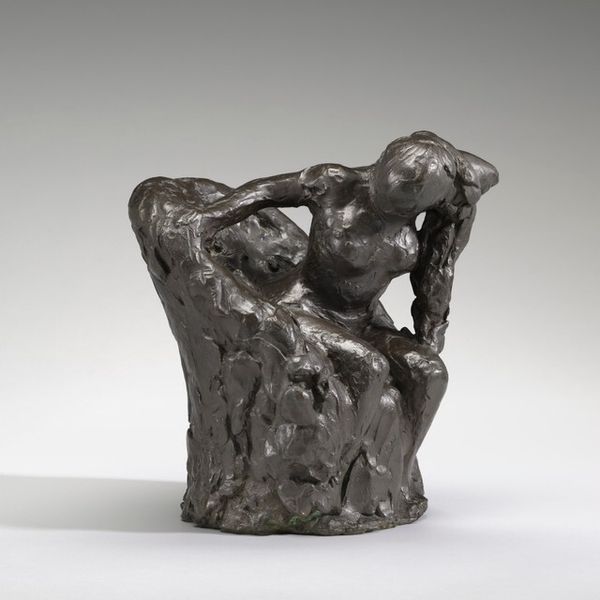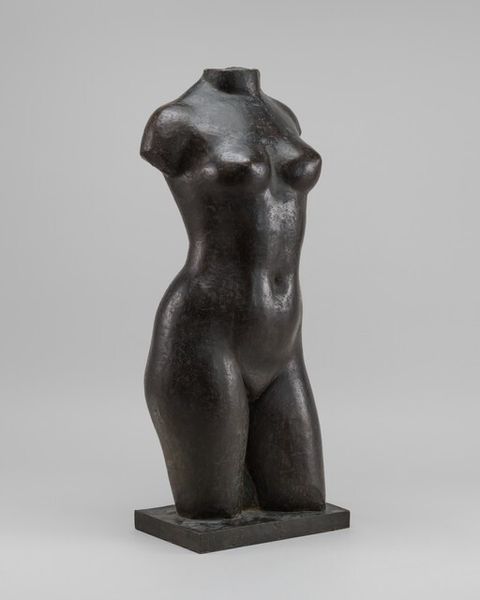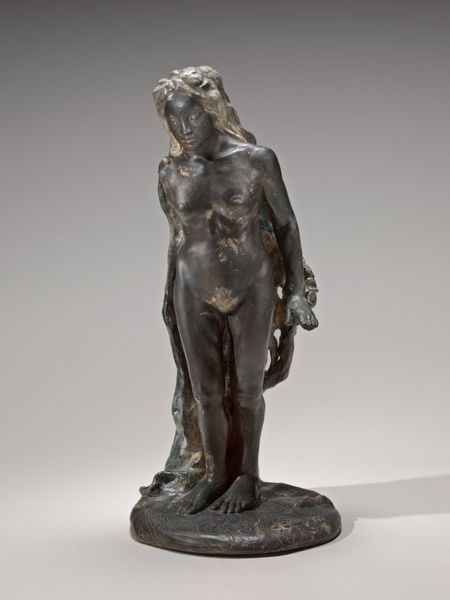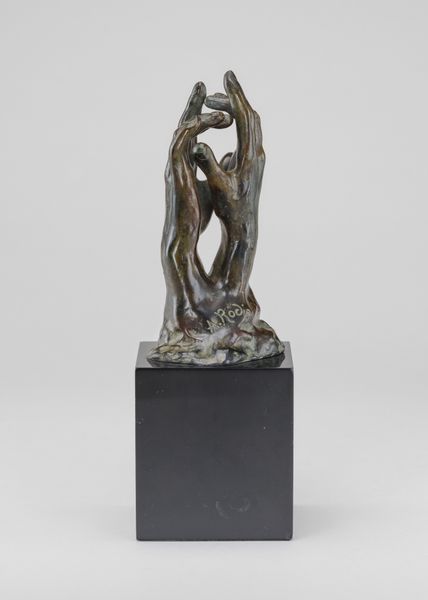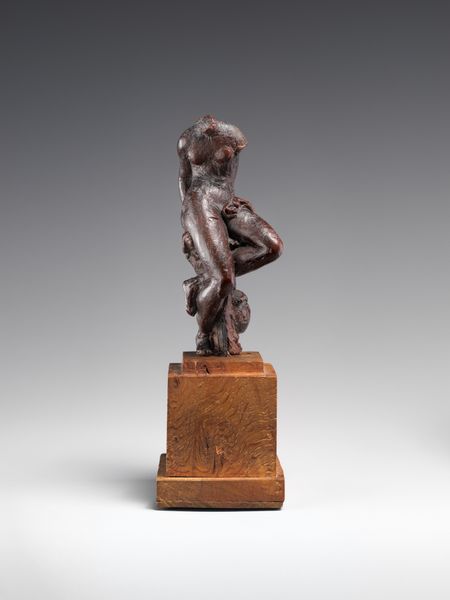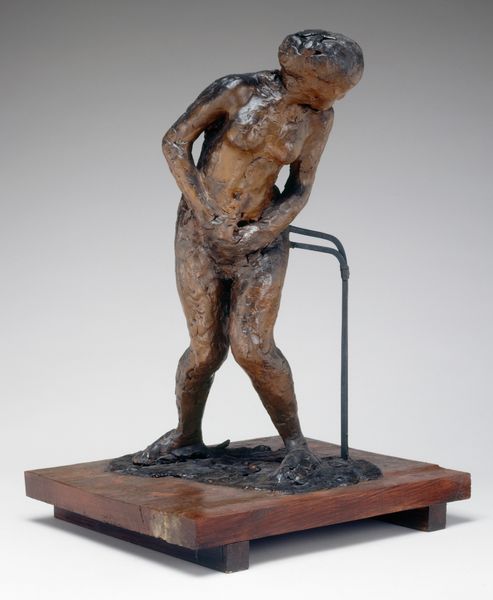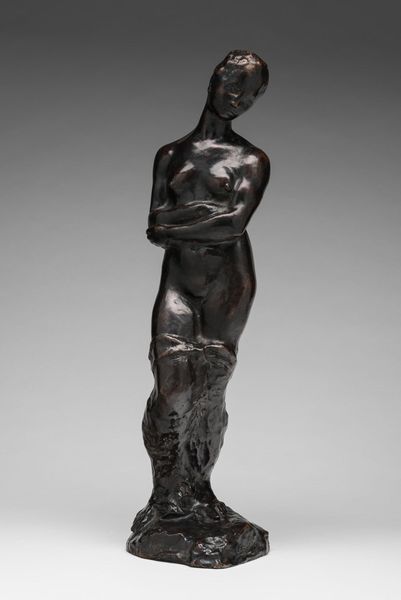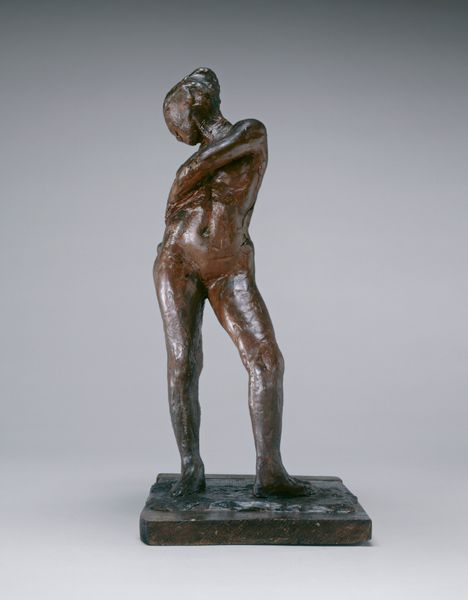
Dimensions: overall: 30.5 x 16.5 x 17.1 cm (12 x 6 1/2 x 6 3/4 in.)
Copyright: National Gallery of Art: CC0 1.0
Curator: The abject sorrow radiating from Rodin's bronze sculpture, "La Douleur (de la Porte)"—"Sorrow (of the Door)"— is almost palpable. It was conceived circa 1889 but only cast later, towards 1983. What strikes you initially? Editor: The way the figure is pressed so forcefully against the rough-hewn bronze form, as though trying to merge or disappear into it. It feels incredibly raw and vulnerable, yet also stoic. Curator: Exactly. It embodies this tension of the human form seeking solace or escape from pain, the contorted pose itself becoming a symbol of that struggle. Rodin originally conceived of this figure, as you may infer from the extended title, for his monumental "Gates of Hell," representing one of the many damned souls within. Editor: So this image of torment was intended as a single note in a vast panorama of suffering. The political ramifications are apparent: What is the meaning of institutional authority if this much pain has been deemed "normal," something to which these gates give passage? Curator: Indeed. And consider how the texture of the bronze contrasts: the smooth, almost classical treatment of the figure’s body, against the jagged, rough surface of the 'door' she clings to. Is the 'door' hell itself, as well as that other, older pain which she must confront? The figure has her back turned away from us. Why? Is there a lack of self-awareness? Editor: The tension between the sensual treatment of the figure and its agonizing gesture creates this magnetic paradox, it’s classically rendered yet pushes into this raw emotionality we typically associate with much later expressionist forms. It also serves as commentary on art production within a patriarchal structure: To be is to be viewed, unless one's role is abjection. It seems a visual metaphor for that which we collectively repress. Curator: A repression that makes space, potentially, for re-emergence and rebirth? Perhaps, too, we’re seeing in the female figure an embodiment of collective wounds, rendered personal. It offers a language with which we may come face to face with our inheritance. Editor: An inheritance no one seeks, but that art like this reminds us we must address—lest we repeat the same patterns in the grander societal narratives playing out at all times, like this art offers its interpretation of what Rodin once witnessed. Curator: Perhaps then its melancholy also gifts us, as we pass by today, with a moment for quietude. Editor: A moment indeed; thank you, Rodin, for bringing these torments to our public attention and scrutiny.
Comments
No comments
Be the first to comment and join the conversation on the ultimate creative platform.
